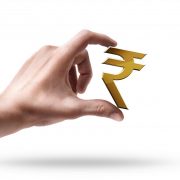Symbol of Indian Currency and its Significance
Among 3000 designs received for the currency symbol of India, only 5 designs got shortlisted. 15 July 2010, it was a proud moment for an associate Professor of IIT Guwahati, Udaya Kumar Dhamalingam, when his design was selected as the present day currency symbol of India.

On 26August 2010, India approved and accepted the new emblem of Indian currency. The design belonged to the same family as the other foreign currencies and looked similar.
After a lot of research on Indian Culture, Udaya designed this symbol which has its foundation of India (Devnagri Script) but at the same time exhibits universality by the use of Roman script.

The symbol is a combination of Devnagri (‘Ra’ )and the Roman letter(‘R’). Devnagri is one of the ancient writing forms of India which has its roots in Sanskrit.
A derivation from Rupees in English and Rupiah in Hindi has given Indian currency a new identity.
Since Hindi is the mother tongue of India, the use of Devnagri script in the symbol makes it the most appropriate for the country.
It defines Indian ethics, values, and culture. It contains two parallel lines, which is generally used in the Devnagri script as the resemblance of the tri-colored flag of India.

Mr. Dharmalingam has included this sign of “equal to” showcasing equality, stating a desire to solve the economic differences prevailing in the society.
Through these horizontal lines, he has portrayed a balanced economy of the nation.
In an interview, he has mentioned that he sketched this icon taking into consideration all the other currencies and his basic philosophy was to design something that reflects the morality of India.
This new identity of Indian currency has proudly made the nation stand among the reputed currencies of the world which previously had Dollar, Yen, Pound, Euro and finally the Indian rupee .




Leave a Reply
Want to join the discussion?Feel free to contribute!